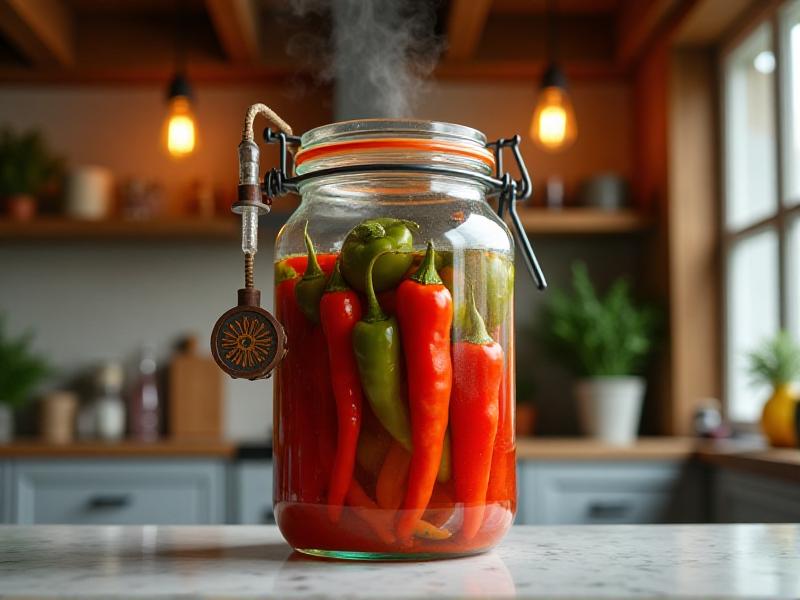Joint Branding with Organic Growers
The Rise of Joint Branding in the Organic Food Industry
In recent years, the organic food industry has seen a significant shift towards joint branding initiatives. As consumers become more health-conscious and environmentally aware, brands are recognizing the value of collaboration to amplify their message and reach. Joint branding, where two or more brands come together to create a unified marketing strategy, has become a powerful tool for organic growers to differentiate themselves in a competitive market.
This approach not only allows brands to pool resources but also to leverage each other’s strengths, creating a synergy that benefits both parties. For organic growers, joint branding can mean access to new markets, increased brand visibility, and enhanced credibility. By aligning with like-minded brands, they can reinforce their commitment to sustainability and health, which resonates strongly with today’s consumers.

Why Organic Growers Are Embracing Collaborative Marketing
Organic growers are increasingly turning to collaborative marketing strategies to amplify their reach and impact. The organic food sector is highly competitive, and standing out requires more than just offering high-quality products. By partnering with other brands, organic growers can tap into new audiences, share marketing costs, and create more compelling narratives around their products.
One of the key reasons for this shift is the growing consumer demand for transparency and authenticity. Joint branding allows organic growers to showcase their commitment to sustainable practices and ethical sourcing in a way that feels genuine and trustworthy. For example, a partnership between an organic vegetable grower and a sustainable packaging company can highlight the entire lifecycle of a product, from farm to table, emphasizing the brand’s dedication to environmental stewardship.

Successful Case Studies of Joint Branding in Organic Agriculture
Several organic growers have successfully leveraged joint branding to enhance their market presence and consumer loyalty. One notable example is the partnership between a well-known organic dairy brand and a local coffee roaster. Together, they launched a line of organic coffee creamers, combining the dairy brand’s reputation for quality with the roaster’s expertise in premium coffee. The result was a product that appealed to health-conscious coffee drinkers and quickly gained popularity in both retail and online markets.
Another successful case is the collaboration between an organic snack company and a fitness brand. By co-branding a line of protein bars, they were able to target health enthusiasts who value both nutrition and convenience. The joint branding effort included shared marketing campaigns, co-hosted events, and cross-promotions, which helped both brands expand their reach and strengthen their market position.

The Role of Sustainability in Joint Branding Initiatives
Sustainability is at the heart of most joint branding initiatives in the organic food industry. Consumers are increasingly looking for brands that align with their values, particularly when it comes to environmental impact. By partnering with other sustainable brands, organic growers can reinforce their commitment to eco-friendly practices and create a more compelling story for their products.
For instance, a joint branding effort between an organic produce company and a renewable energy provider can highlight the use of solar power in farming operations. This not only differentiates the brand but also educates consumers about the importance of sustainable energy in agriculture. Such collaborations can also lead to innovative solutions, such as reducing carbon footprints or minimizing waste, which further enhance the brand’s appeal to environmentally conscious consumers.
Challenges and Opportunities in Joint Branding for Organic Growers
While joint branding offers numerous benefits, it also comes with its own set of challenges. One of the primary concerns for organic growers is maintaining brand identity while collaborating with another company. It’s essential to ensure that the partnership aligns with the brand’s values and mission, as any misalignment can lead to confusion or even damage the brand’s reputation.
Another challenge is the potential for unequal resource allocation. Smaller organic growers may find it difficult to compete with larger partners in terms of marketing budgets or influence. However, these challenges also present opportunities for creative solutions. For example, smaller brands can focus on niche markets or leverage their unique selling points, such as local sourcing or artisanal production, to create a distinct identity within the partnership.
Future Trends in Joint Branding for Organic Growers
As the organic food industry continues to evolve, so too will the strategies for joint branding. One emerging trend is the use of technology to enhance collaboration and consumer engagement. For example, blockchain technology can be used to provide transparent supply chain information, allowing consumers to trace the journey of their food from farm to table. This level of transparency can be a powerful selling point for joint branding initiatives.
Another trend is the rise of experiential marketing, where brands create immersive experiences to connect with consumers on a deeper level. Organic growers can partner with event organizers, chefs, or wellness experts to host workshops, tastings, or farm tours that showcase their products and values. These experiences not only build brand loyalty but also create memorable moments that consumers are likely to share with others.








